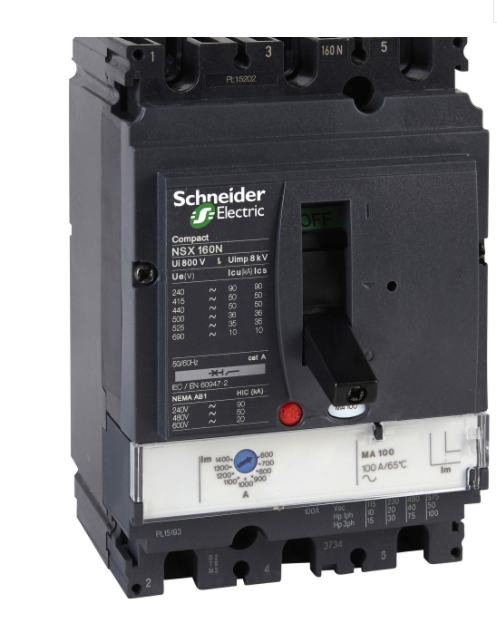
What is Icu?
The Ics & Icu of a circuit breaker are its different parameters, also known as rated breaking capacity (Icu) or (Icn), is the maximum fault-current a circuit-breaker can interrupt successfully without being damaged but may not be able to use it again for service.
The probability of such a fault current occurring is extremely low, and in normal circumstances the fault-currents are considerably less than the rated breaking capacity (Icu) of the CB.
IEC 60947-2 recommends two requirements which ensure that reliability are:
• Ultimate breaking capacity (Icu)
• Service breaking capacity (Ics)
However, Icu is the maximum short-circuit current that a circuit breaker can handle without damage. That maximum could be 6kA,10kA, 18kA or 25kA amps or when it comes to MCCBs, as high as 200kA. However, in this sense, Icu is essentially as statement of quality for a specific voltage rating.
And that’s the point where Ics comes in.
Normally the value of Icu for Miniature Circuit Breaker (MCB) is between 6kA to10kA and the Value of Moulded Case Circuit Breaker (MCCB) may be 200kA.
Read Also:
Ics
Ics is expressed as a percentage ratio of Icu and tells you the maximum short-circuit current if a circuit breaker can withstand three times and still resume normal service. However, it is expressed as a percentage of Icu, viz: 25, 50, 75, 100% for industrial circuit-breakers. The higher the lcs, the more reliable the circuit breaker.
On the other hand it is important that high currents (of low probability) be interrupted under good conditions, so that the CB is immediately available for reclosure, after the faulty circuit has been repaired.
If you want to know about other parameters of Circuit Breakers like Ue, In, Ir, Im then read this article
Read Also:
- What are Ue, In, Ir, Im in a Circuit Breaker?
- How to Read Nameplate of Miniature Circuit Breaker (MCB)?

An experienced electrical professional having more than 8 years of experience of the industry in diverse fields of engineering including Electrical Design & Consultancy, Audit & Inspection, Execution of Construction Projects having expertise in designing of HighRise buildings, Residential & Commercial buildings, Offices, Schools, Restaurants and some Industrial projects